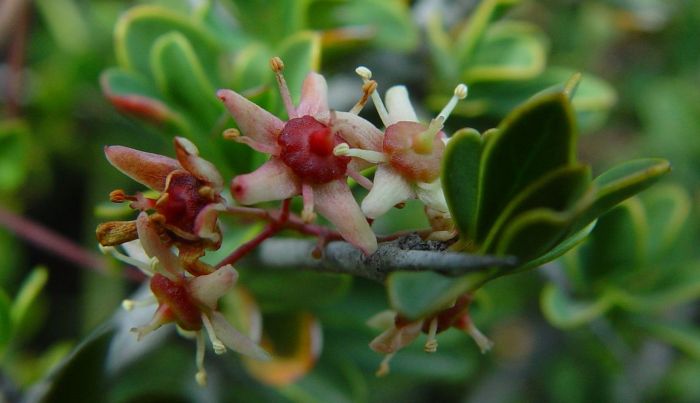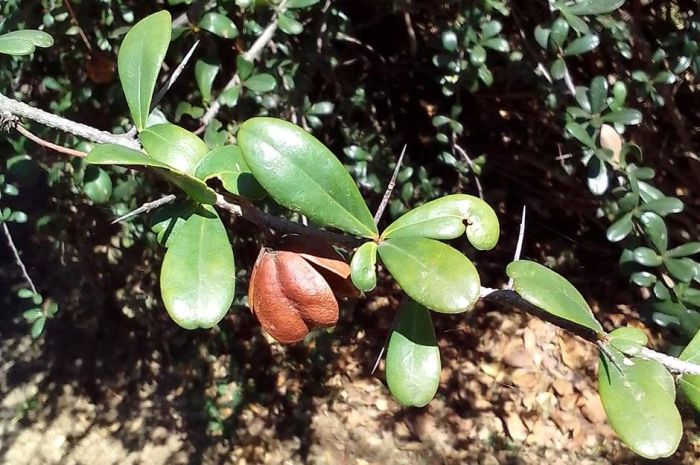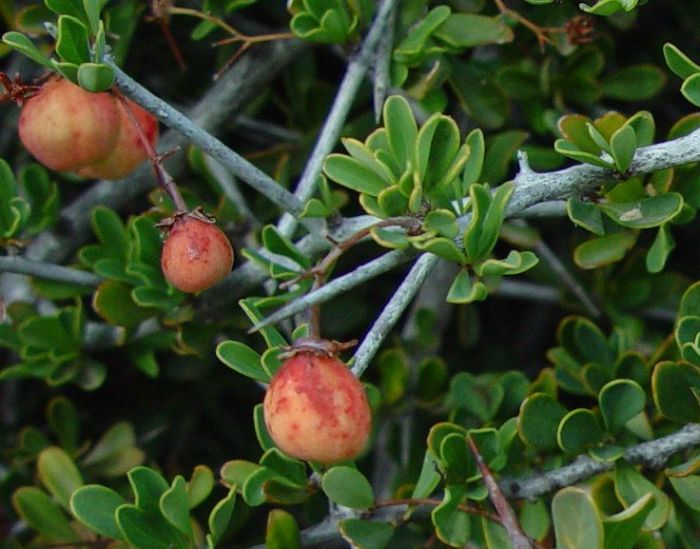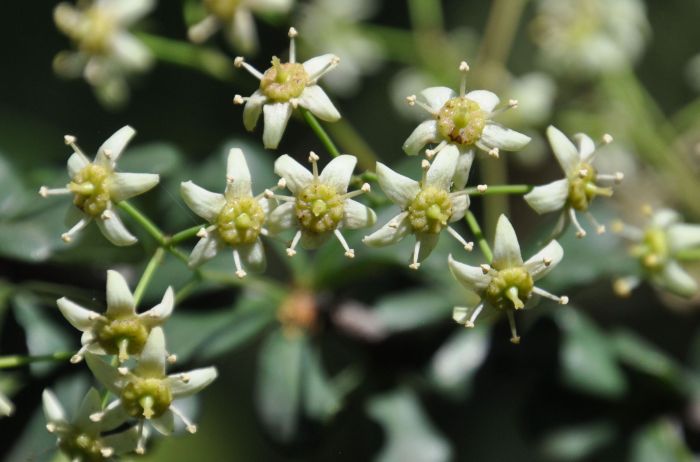Putterlickia pyracantha
Putterlickia pyracantha (L.) Szyszyl.
Family: Celastraceae
Common names: false spike-thorn, fire-thorn putterlickia (Eng.); valspendoring, branddoring (Afr.); intlangwana, umhlangwe, umqaqoba (Xho.)
SA Tree No: 403.1
Introduction
An awesome multi-stemmed shrub or small tree, with the most attractive flowers that become redder and more showy after they open. Its spiny character makes it more noticeable among other plants.

Description
Description
Putterlickia pyracantha on occasion, grows as a small bushy tree 4–6 m tall, but is usually a spiny shrub 2–3 m high. Bark is often concealed by a grey waxy layer that peels off longitudinally to expose small pale lenticels. Stems often arching. Branchlets are angular and red-brown. The spines are sharp, robust or slender, straight, up to 50 mm long, with or without leaves. Leaves are leathery, hairless, dark green, net-veining less visible above than it is below, apex usually rounded.

Flowers are star-like, with cream-coloured, spreading petals, up to 10 mm in diameter, and are in loose, branched, spreading heads, about 60–100 mm wide, on every individual, slender stalk, with the leaves, on dwarf spur-branchlets. Flowering time is in early summer (November to January).

Fruits are obconical capsules, 10–20 mm long, with 3 woody lobes, cream-coloured to pink or red, pendulous, on the end of slender jointed stalks, up 30 mm long. Seeds are enveloped completely by an orange aril and are ripe in late summer to winter (February to August). The fruit lobes assume a purplish colour on their outer surface. The lobe margin is thickened, the seams prominent where they were firmly attached to each other, when the seeds were developing inside the ovary.
Conservation Status
Status
According to the Red List of South African plants, Putterlickia pyracantha is assessed as Least Concern (LC) and is not threatened.

Distribution and habitat
Distribution description
This plant occurs naturally in dune forest, scrub, coastal and valley thicket, and fynbos in the Western Cape, from Vredenburg to the Cape Peninsula, and eastwards along the southern coastal areas to the Eastern Cape, KwaZulu-Natal, Mozambique and the Kingdom of eSwatini.

Derivation of name and historical aspects
History
The genus Putterlickia is named after Aloys Putterlick (1910–45), a Dutch botanist at the Vienna Museum. The species name pyracantha means ‘fire thorn’ and is derived from the Greek words pyrrho, meaning ‘fire’, ‘red’ or ‘fiery-red’ and akanthos, meaning ‘thorn’. This is peculiar as it is the fruits that are sometimes red, not the thorns. Maybe the Greek word karpos, meaning ‘fruit’ would have been a more appropriate choice, resulting in something like pyrocarpa. Or perhaps they earned their name because we experience a burning sensation when our skin is pierced by their thorns.

Ecology
Ecology
Bees have been observed hovering over the bush in the Lowveld National Botanical Garden. Birds and other wildlife eat the seeds.

Uses
Use
The roots of this tree are said to be used to make beer and as an aphrodisiac. Other parts of the plant are commonly used to treat chest pains and snake bite.
This is a good plant to use as a barrier plant or security hedge, as it forms an impenetrable mass of spiny branches.

Growing Putterlickia pyracantha
Grow
This plant can be easily propagated by cuttings, and by seeds.
Grow Putterlickia pyracantha in well-drained soil, in a sunny or semi-shaded position. Feed with compost or moderate fertilizer for best performance. Prune to shape or to keep tidy.
Credits
Sephatle Evans Molekoa
Lowveld National Botanical Garden
October 2020
Plant Attributes:
Plant Type: Shrub, Tree
SA Distribution: Eastern Cape, KwaZulu-Natal, Western Cape
Soil type: Sandy, Loam
Flowering season: Spring, Early Summer
PH:
Flower colour: White
Aspect: Full Sun, Morning Sun (Semi Shade), Afternoon Sun (Semi Shade)
Gardening skill: Easy
Special Features:
Horticultural zones









Rate this article
Article well written and informative
Rate this plant
Is this an interesting plant?
Login to add your Comment
Back to topNot registered yet? Click here to register.